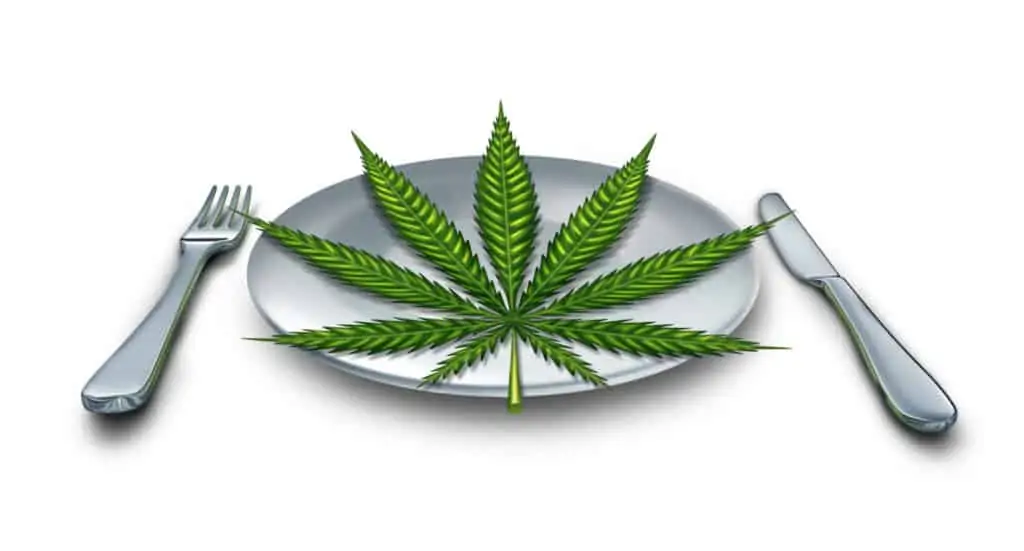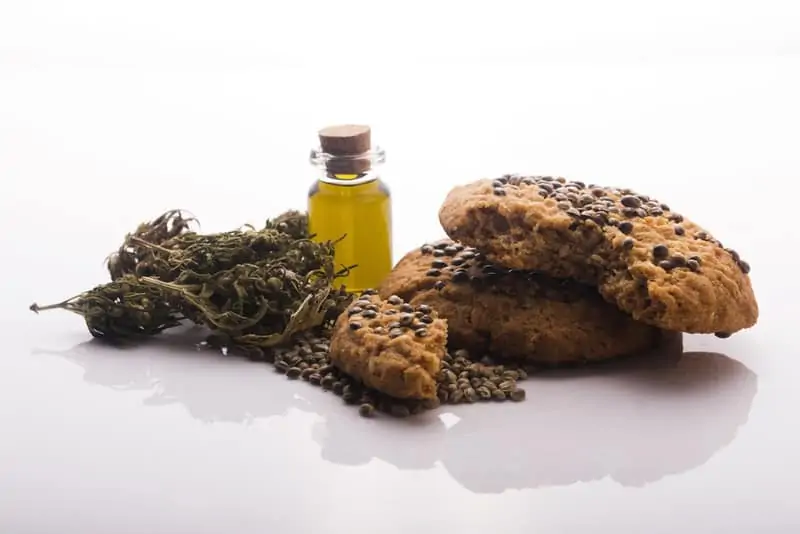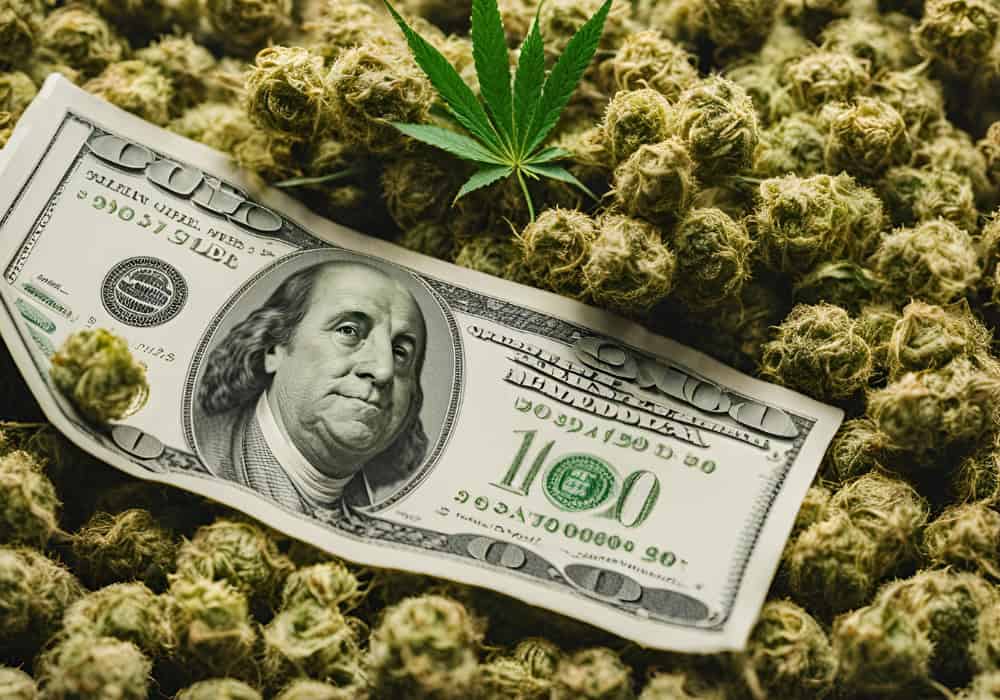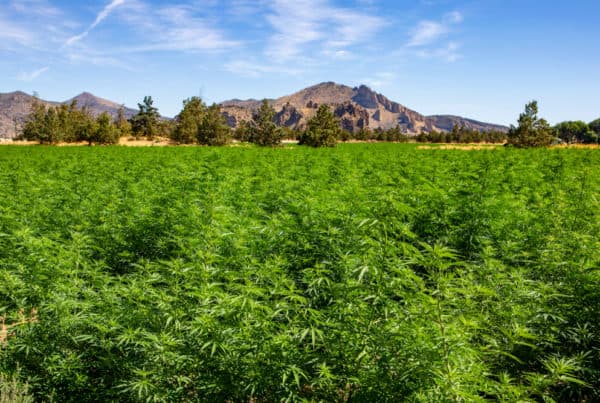TABLE OF CONTENTS
The production and sale of cannabis edible products has grown by over 100% in the past few years in the United States.
There are various edible products containing THC, making them psychoactive. On the other hand, there are edibles made without the psychoactive ingredient, often referred to as “CBD-rich” goods, which are created for medical purposes.
Laws regarding the creation and sale of edibles vary significantly from state to state. Some states mandate the use of a commercial kitchen and require that the cannabis butters and oils used be produced on site. Other states have more lenient regulations and exercise less control over the manufacture of edibles.
For example, some states prohibit edibles in fruit or animal shapes. These shapes can attract children and cause accidental consumption.
Other states restrict edibles use for medical patients. States may have strict dose limits and packaging and labeling regulations.
Regardless of which state the edibles are made in, they cannot be transported across state lines. This makes it very difficult for operators of edible cannabis products to have a national brand.
To get around this, some brands open production facilities in multiple medical marijuana states, or at times, sell a license to local producers to use their brand name and recipes for a fee of each product sold.
Benefits of Selling Edibles
Selling edibles has become a profitable venture for many. Some consumers try to avoid smoking and vaporizing cannabis. Smoking can be harsh to the lungs and the smoke can be quite pungent. Edibles can be a healthier alternative to smoking.
Patients with respiratory conditions can benefit from edibles. Edibles also provide longer-lasting relief compared to flower. Edibles are a discreet option that you can consume nearly anywhere. You won't have the smell of smoke or vapor.
Generally, edibles sell for higher prices than the raw flower. Many customers are willing to pay for this premium.
This is great news for edibles brands. Edibles bring in higher profit margins and prices than raw flower buds. If flower prices fall, the edibles market can continue to make a profit due to their higher margins.
Producers sold cannabis extracts for $12 and cost $1.85 per gram to produce. The profit margin for extracts is 84 percent. Cannabis edibles commanded about $36 per dry gram equivalent and cost $2.85 to produce. That’s a profit margin of 92 percent.
Do You Need a Business License?
The industry is full of opportunities for edibles chefs and investors. Before starting your edibles business, you need to research your state and local cannabis and licensing laws. Some municipalities prohibit commercial cannabis kitchens.
If your state and local laws allow for a cannabis kitchen, you’ll need to apply for the appropriate licenses.
Career Outlook for Cannabis Edibles Cooks and Business Owners
The potential for edible cannabis products is very strong, partly because of the lack of competition from the illegal black market. Chefs that know how and what to make will be in great demand across the market.
Entrepreneurs with the right combination of product, marketing, and ability to sell it can quickly be making money hand over fist.
What Are the Costs Associated with Starting a Cannabis Edibles Business?
Although less expensive than opening a retail cannabis store, the edibles business has its share of expenses as well. Some of the expenses involved with starting an edibles cannabis business are
• Hiring Staff
• Sales & Marketing
• Website Development
• Childproof packaging
• Kitchen Equipment (Commercial Kitchen in some states)
• Rent (if renting space for cooking)
• Purchasing of Cannabis
• Product Testing
In California, the average baker of edible cannabis products struggles to make a ton of money on it since most dispensaries in California take edibles on consignment.
If they do not sell, the baker gets nothing. California is also the most flooded with cannabis businesses and entrepreneurs.
Then on the opposite end are big companies like Dixie Elixirs, a Colorado based company that reports sales in the $40 million per year range.
How to Price Edibles
Pricing edibles can get a bit tricky. You must make a profit while selling your products at a competitive rate. Start by calculating the cost of ingredients for one batch of edibles. Divide that number by the number of edible products in the batch.
You need to consider other relevant costs. Costs include labor, taxes, distribution, and product loss. A standard 100 mg edible could cost between $10-$20.
Edible producers can become profitable in a few different ways. One way is to produce a higher-end product than the competition. That way, you can charge more for the extra care and better ingredients.
Another way to become profitable is to undercut market prices. Brands that take this route depend on selling a larger volume of products . They can make more money that way in the long run. The latter method involves a large labor force that can produce a lot of product per day.

How to Sell Edibles
To sell edibles, you’ll need to apply for a manufacturer's license from your state and local government. If approved, you’ll need to find a good location for a commercial kitchen that meets zoning regulations. Consider your security needs to protect your staff and inventory.
You’ll have to grow your brand through cannabis marketing efforts on your website and social media.
Getting financing for an edibles company is one of the hardest obstacles. Cannabis’ status as a federally-controlled substance has prevented many banks from working with these businesses. As a result, businesses have resorted to finding loans and investors elsewhere.
Getting insurance can also be costly due to the risks associated with working with a pot business.
Develop the edible product or line of products you’re planning on selling. Think of the dispensaries you want to sell to. Not every dispensary will align with your brand or customer base.
Now, it’s time to pitch your product to your local dispensary. Send samples and get feedback from your potential customers. Nurture and grow your vendor relationship by providing consistent and prompt service.
DIY Edibles At Home
To make your own edibles at home there is no better way than to first learn how to make cannabutter, how to make cannabis oil, and other edibles from online training at the premier cannabis cooking school.
Save money with DIY edibles and make your own delicious cannabis-infused recipes today!
You have probably heard that you can save money by making your own marijuana edibles (DIY edibles). But is it really worth it? How much money can you save?
We recently analyzed the cost savings for making your own cannabis do it yourself (DIY) edibles instead of buying them. Cannabis prices vary widely from state to state. For the purpose of this analysis, we used the average prices in Colorado.
| Ingredient | Amount | Average Percent THC | Average Price |
| Marijuana Flower | 1 oz | 20% | $220 |
| Cannabis Concentrate | 7 gm | 60% | $245 |
| Marijuana Edible | 100 mg | n/a | $24 |
Table 1: Colorado Prices
At first glance, it might seem like buying a ready-made marijuana edible is an okay value for your money. After all, the average price for an edible is lower than the average price for an ounce of flower. But how many edibles can you make from raw marijuana ingredients?
DIY Cannabis Edibles Cost per Milligram
This table shows the approximate milligrams of cannabinoids you can expect to get when you make a marijuana tincture or cannabis infusion from your own raw materials. As you can see, the price per milligram is much lower when you make your own edibles.
| Ingredient | Process | Yield (mg) | Cost/10 mg |
| 1 oz 20% flower @ $220 | Alcohol extraction (advanced) | 5600 | $0.39 |
| 1 oz 20% flower @ $220 | Alcohol extraction (basic) | 4480 | $0.49 |
| 1 oz 20% flower @ $220 | Infusion (advanced) | 4480 | $0.49 |
| 1 oz 20% flower @ $220 | Infusion (basic) | 4480 | $0.49 |
| 7 gm 60% concentrate @ $245 | n/a | 4200 | $0.58 |
| 100 mg candy bar at $24 | n/a | 100 | $2.40 |
Table 2: Price per 100 Milligram Edible
Marijuana Processing Equipment Cost
But what about hidden costs? How much does it cost to buy cannabis processing equipment? How long will it take to make marijuana-infused edibles?
This next table shows how much it costs to make a 10 mg edible at home. The estimate includes the cost of the raw materials and the cost of equipment. It also shows the approximate number of hours needed for each process.
| Ingredient | Process | 1-Time Equip Cost | Hours to Process | Cost per 10 mg w/equipment |
| 1 oz 20% flower @ $220 | Alcohol extraction (advanced) | $450 | 24 | $1.20 |
| 1 oz 20% flower @ $220 | Alcohol extraction (basic) | $66 | 20 | $0.64 |
| 1 oz 20% flower @ $220 | Infusion (butter, advanced) | $365 | 24 | $1.31 |
| 1 oz 20% flower @ $220 | Infusion (butter, basic) | $115 | 24 | $0.75 |
| 7 gm 60% concentrate@ $245 | n/a | 0 | 1 | $0.58 |
| 100 mg edible @ $24 | n/a | 0 | 0 | $2.40 |
Table 3: First Batch Cost per 10 Milligram Edible (Including Equipment)
As you can see, you can save money by making your own cannabis-infused edibles on the very first batch. This is true even when you include the price of the equipment in your cost! And remember, you only have to buy the equipment once. After the first batch, the cost per milligram will be the same as shown in Table 2.
Training Cost
But how long is it going to take to learn how to make cannabutter? Aren’t you going to lose money while you figure out the best way to make marijuana-infused products?
CTU can help! Our marijuana training programs are priced so low that you will STILL save money when you make your marijuana edibles—on the very first batch.
This table shows the price per 10 mg candy bar with equipment and training costs included. As you can see,, the price per 10-mg marijuana edible is LOWER than the price of a ready-made cannabis edible. This is true even when the one-time costs of equipment and training are added!
|
Ingredient |
Process | CTU Price | 1st batch cost per 10 mg with equip & training |
| 1 oz 20% flower @ $220 | Alcohol extraction (advanced) | $247 | $1.63 |
| 1 oz 20% flower @ $220 | Alcohol extraction (basic) | $247 | $1.19 |
| 1 oz 20% flower @ $220 | Infusion (advanced) | $247 | $1.86 |
| 1 oz 20% flower @ $220 | Infusion (basic) | $247 | $1.30 |
| 7 gm 60% concentrate @ $245 | n/a | $247 | $1.17 |
| 100 mg candy bar at $24 | n/a | 0 | $2.40 |
Table 4: First Batch Cost per 10-Milligram Edible (Including Equipment and Training)
The Best Choice for You
Now that you have the basic price information, which method of making marijuana edibles is best for you?
- If you an occasional cannabis edible user, we recommend that you make your homemade cannabis edibles using marijuana extracts. Although the cost per cannabis edible is a bit higher with this method, concentrates are easy to use, and you don’t need any specialized equipment.
- If you consume less than 100 mg of marijuana edibles per day, we recommend that you use a simple infusion or extraction method. These methods can be done with a minimum of specialized equipment and will yield 2.5 to 8 months’ worth of edibles from one ounce of cannabis.
- If you are making edibles for multiple people or if you consume more than 100 mg per day, we recommend you upgrade to a more advanced infusion method. Advanced infusion methods require some specialized equipment and training, but you can infuse as much as 40,000 mg of THC at one time—enough to create four thousand 10-mg, cannabis-infused edibles at once.
- If you want to get the most out of your raw materials for medical applications, we recommend that you upgrade to an advanced extraction method such as ethanol extraction using lab glass. Advanced extraction methods require specialized equipment and training but can extract approximately 20% more cannabinoids than other methods.
Whatever method you choose to create your cannabis-infused edibles, making your own DIY edibles is undeniably a better value than purchasing ready-made marijuana edibles from a dispensary. That’s the case even when you factor in the cost of equipment and training!
What Do I Need To Make Cannabis Edibles?
The ingredients you need differ slightly considering what product you're going for. However, here are some essential ingredients you need.
- cannabis tincture
- cannabutter
- canna oil
- chocolates
- unsalted butter
- vanilla extract or any flavor of your choice
- sugar
- baking powder
- kosher salt.
The equipment needed includes a weed grinder, food processor, candy mold candy sticks, cookie sheet that’s lined with parchment paper, and of course, and sizable pots.
Getting the Dosage Right
If you ask many people who have tried candy cannabis edibles before, they will quickly confirm the importance of getting the dosage of the cannabis right.
You see, there’s a difference between smoking or vaping pot and taking it as edibles. This is because your body metabolizes edibles differently. For starters, your body takes longer (about 40-45 mins) to start feeling the influence of the weed from edibles.
For this reason, you may be deceived into thinking that you need more of the substance to get the juice. Unfortunately, by the time it kicks in, it may hit you more challenging than you think. So, go easy on the dosage.
Typically, a beginner’s tolerance would differ from that of an expert. Hence, it’s important not to take more than you can handle. You may refer to this cannabis dosing guide if you’re unsure of the right amount to use.
But for smokers, they’ll instantly feel the weed effect because THC (Tetrahydrocannabinol), the substance responsible for the ‘high feeling,’ enters your bloodstream through the lungs. And because THC doesn’t metabolize well in the blood, it binds rather quickly to cannabinoid receptors.
The effect kicks in almost immediately, but it doesn’t last as long as it would if you take marijuana as edibles.
Three Important Prerequisites For Making Cannabis Edibles
Now that we’ve got some information about what we need and how much weed we need to make edibles, it’s about time we delved deeper into the heart of the discussion. So here are the essential prerequisites for getting the best out of your candy-making venture.
“
There are over 300,000 jobs in the cannabis industry. CTU trained me for one of them!

Makes $24.50 @ THC +
1. Choose your strain
Choosing a marijuana strain is important because of the different types of available work best under different circumstances. But it depends mostly on you — the consumer. For instance, sativas will be good for driving your energy level notches higher, while indicas will do well for relaxation or sleep.
Also, you need to take care not to infuse too much, considering that THC is the dominant cannabinoid in the pot — unless, of course, you’re taking it for medical reasons. If that’s the case, be sure to pick medicinal marijuana that holds the right medicinal properties.
2. Decarboxylating the marijuana
Your weed is non-psychoactive without heat. This is why you need to cook it for decarboxylating it. However, if you cook for too long, it also renders it impotent. The boiling temperature for THC is 314ºF. Needless to say, you need to get a firm grip on the process.
This is why most consumers prefer smoking and vaping to edibles. But no need to fret; the process is easy.
- First, preheat your oven to 240ºF
- Grind the leaves into little pieces and load them into a cookie sheet
- Now, place the cookie sheet in an oven and monitor it for 20-30 minutes.
- Heat for about 20 minutes, place the weed in a good processor to let it ground very well.
3. Making cannabutter
This is a step closer to having your candy edibles ready. Making a cannabutter involves infusing the marijuana into a food that’s ideal for baking, hence the need for butter.
To a boiling quart of water, add some sticks of butter. After it melts completely, add your marijuana to it, and lower the heat to let it simmer. Allow the butter to cook for about three hours. This will get the mixture to thicken at the top. At this point, you’re nearly finished.
Now place the butter in a bowl lined with cheesecloth and squeeze it hard to let out any liquid butter left. Allow the liquid to cool for an hour, then place it in the fridge to get the spread’s texture.
Become a CBD Edibles Chef with Cannabis Training University
Take your cooking skills to the next level by enrolling in affordable online cannabis training from CTU. Our Master of Cannabis certification program covers stovetop, oven, and crockpot methods to make cannabis butter and cooking oil. Make your own edibles by enrolling today!
To succeed as a cannabis edibles producer it takes some experimenting with different and unique recipes. To learn how to make edible cannabis products, join CTU! Enroll in cannabis college now and begin a cannabis career!

Karen Getchell
Karen gained expertise in developing training programs and technical documentation as a Senior Editor at Cisco Systems. She began her journey in cannabis as a patient, searching for a way to heal herself. When she perfected a method for making cannabis oil, other patients began to seek her out. An early adopter of CBD medicine, she started her CBD-infused-products business in 2014. Over the last two decades, Karen has taught hundreds of patients and caregivers how to select strains, infuse oils, and extract cannabinoids.
When she isn’t teaching cannabis cooking classes, Karen works as a cannabis business consultant, writes for online cannabis publications like Cannabis Training University, Leafly, and Weedmaps, and runs a CBD-infused-product business.












 Jeff was involved in an accident where he endured a traumatic brain injury. He had a week-long stay in ICU where brain surgeons
Jeff was involved in an accident where he endured a traumatic brain injury. He had a week-long stay in ICU where brain surgeons  100% risk free money back guarantee within 48 hours after purchase if student has not completed any of the courses or exams.
100% risk free money back guarantee within 48 hours after purchase if student has not completed any of the courses or exams.